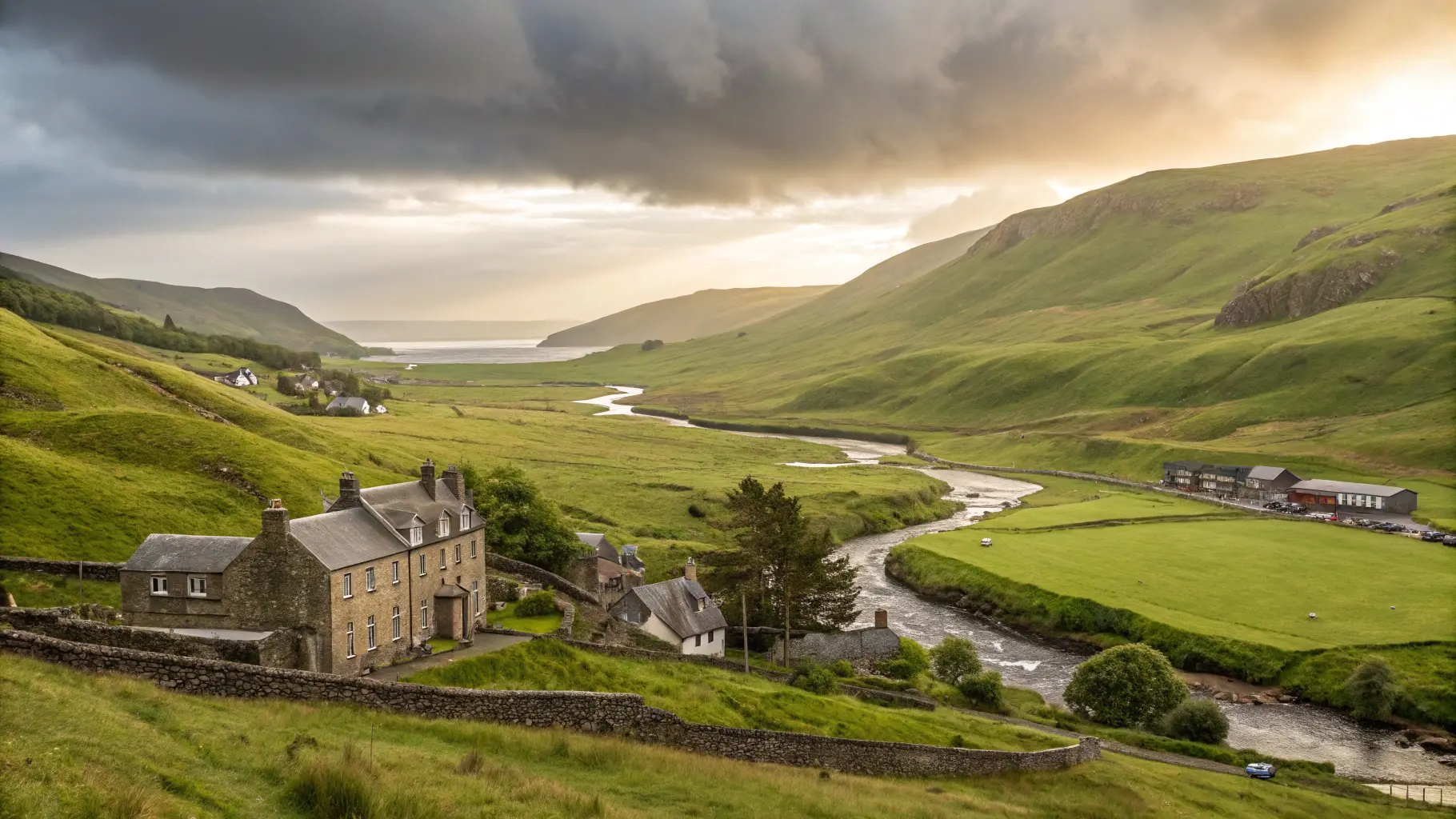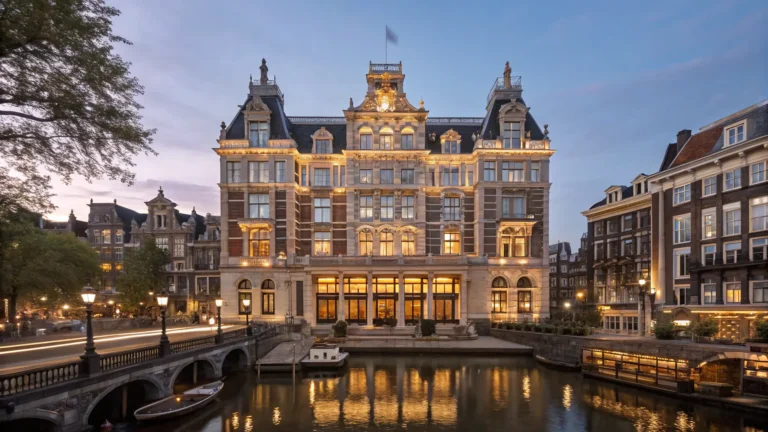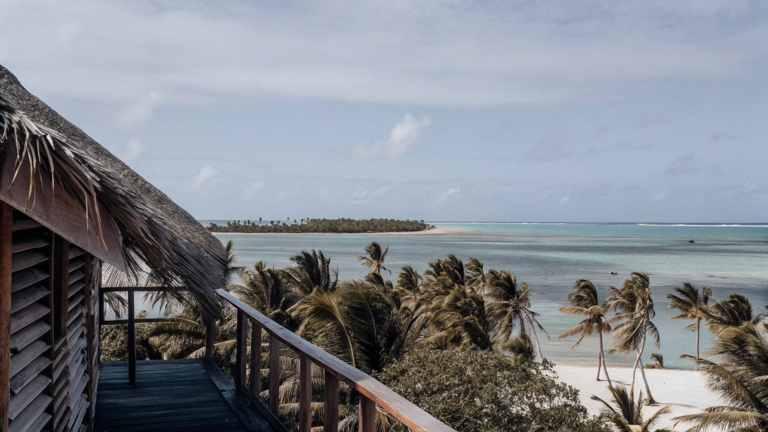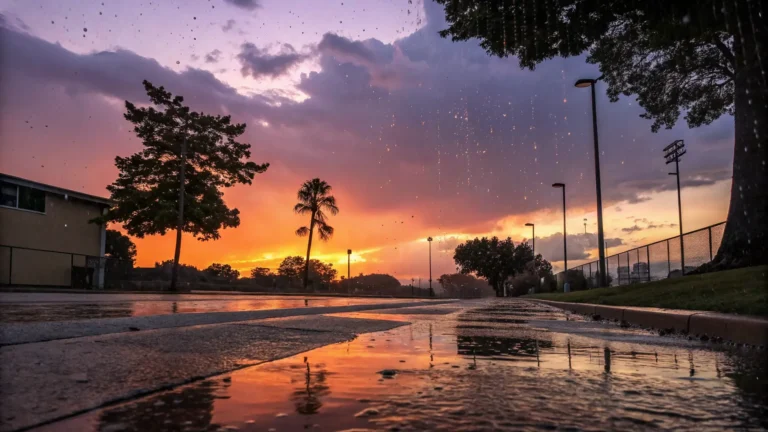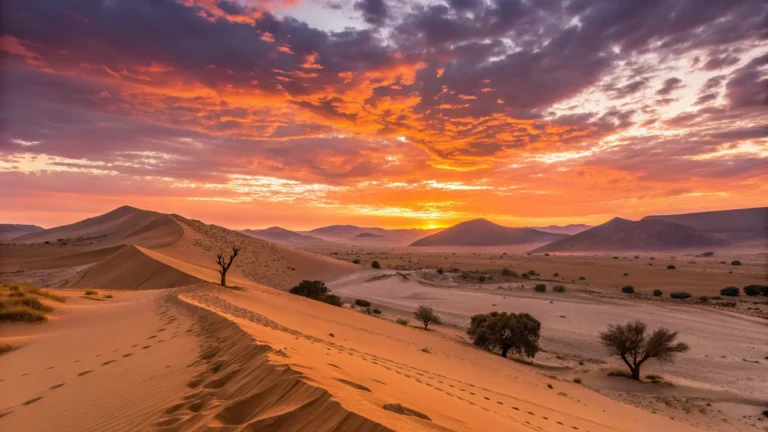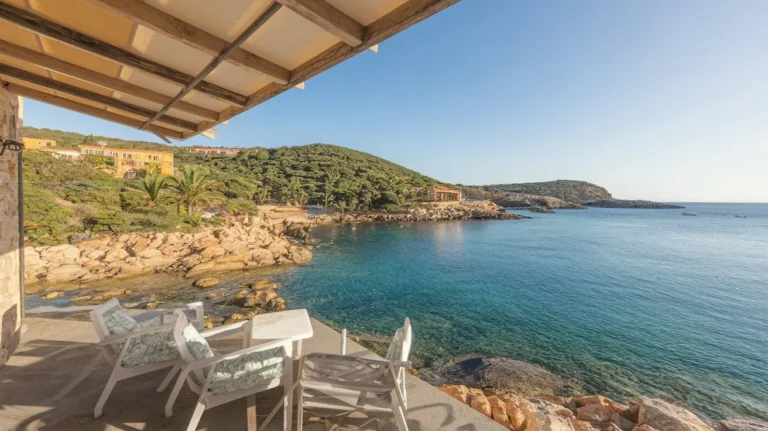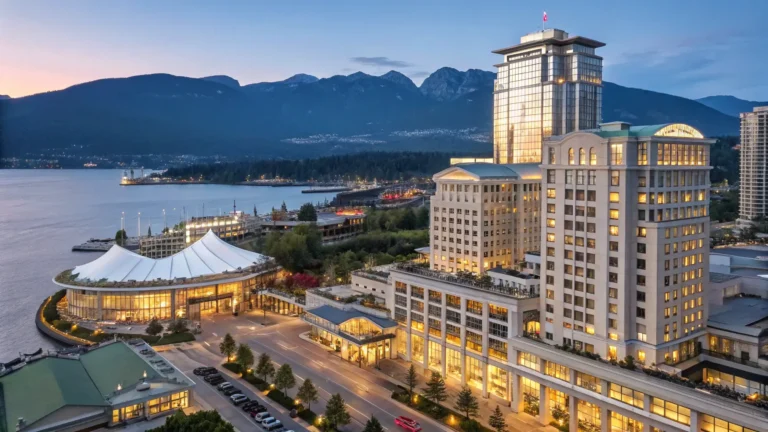Best Month to Visit Scotland How to Choose in 2025
Last updated on May 26th, 2025 at 11:51 pm
Three years ago, I stood soaking wet in a phone box in Glencoe, watching torrential rain hammer the mountains while my “waterproof” jacket leaked like a sieve. It was early June, supposedly perfect Scottish weather, and I was questioning every life choice that led me there.
Fast forward to last November – I’m sitting by a crackling fire in a Highland inn, watching snow dust the peaks outside while nursing the best whisky of my life. The innkeeper, a gruff Scotsman named Hamish, chuckles at my summer horror story. “Aye, that’s what ye get for believing the weather forecast,” he says. “Scotland doesn’t read the manual.”
That soggy phone box moment taught me everything about visiting Scotland: forget what you think you know about seasons, throw your weather expectations out the window, and start thinking like a local. After six visits spanning every month except February (working on it), I’ve cracked the code on when to visit this wild, beautiful, utterly unpredictable country.
The truth? There’s no universal “best” time – only the right time for what YOU want from Scotland.
Scottish Weather: A Masterclass in Humility
Let me tell you about Scottish weather personalities, because that’s honestly the best way to think about it.
January through March is Scotland’s grumpy teenager phase. Moody, unpredictable, occasionally brilliant, but mostly just wants to be left alone. You’ll get days so beautiful they make you forget it’s winter, then days so miserable you wonder why humans ever settled here.
April and May? That’s Scotland waking up and remembering it’s gorgeous. Like a friend who’s finally had enough coffee to be pleasant company. The weather’s still figuring itself out, but you can see glimpses of what’s coming.
June through August is Scotland putting on a show. Sometimes it nails the performance – those magical 70-degree days with 18 hours of sunlight that make you understand why people write poems about the Highlands. Other times it forgets its lines and dumps rain on outdoor festivals.
September and October? Scotland being sophisticated. The weather’s more predictable, the landscapes are stunning, and everything feels just a bit more grown-up.
November and December bring out Scotland’s dramatic side. Think Shakespearean tragedy levels of atmosphere – lots of mist, plenty of mood, absolutely gorgeous if you’re into that sort of thing.
I’ve learned to check three different weather apps, then ignore all of them and pack for everything anyway.
Breaking Down the Months: What Nobody Actually Tells You
January: Scotland’s Hangover Month
Average temps hover around 35-40°F, and daylight lasts maybe seven hours if you’re lucky. But here’s what guidebooks won’t tell you – January Scotland is magical for the right person.
I spent Hogmanay in Glasgow three years back. New Year’s Eve was absolutely mental – thousands of people, bagpipes, fireworks, and a street party that went until dawn. The next few days were quiet, cozy, and perfect for exploring empty museums and warm pubs.
Plus, hotel rates are dirt cheap. I stayed in a gorgeous Victorian hotel for £45 a night that would cost £200 in August.
Perfect for: Budget travelers, pub enthusiasts, anyone who thinks tourist crowds are the worst part of travel
February: The Forgotten Month
Most people skip February entirely, which is their loss. It’s still cold and dark, but you start getting hints that spring exists somewhere under all that gray.
I haven’t done February yet (curse you, work schedule), but my Scottish mate Fiona swears it’s brilliant for whisky tours. Distillery staff have time to chat, tastings aren’t rushed, and you’re not fighting coaches full of tourists for attention.
Perfect for: Whisky lovers, people who like having places to themselves, anyone planning a cozy romantic getaway
March: Spring’s Awkward Phase
March is like that friend who can’t decide what to wear – you’ll get snow one day, sunshine the next, then sideways rain that makes you question reality.
I did a terrible job planning a March trip to Edinburgh. Packed mostly spring clothes, then spent the first day buying winter gear because nobody mentioned it might snow. But by day three, I was in a t-shirt photographing daffodils in Princes Street Gardens.
Perfect for: Flexible travelers, people who don’t mind weather surprises, anyone wanting decent prices before spring really kicks in
April: Finding Its Groove
This might be Scotland’s most underrated month. Weather’s getting reliable (50s-60s most days), tourist numbers are still manageable, and everything starts looking properly beautiful.
Had my best castle experience ever at Dunnottar in April. Dramatic cliffs, crashing waves, ancient ruins, and maybe six other people the entire afternoon. Try doing that in July.
Perfect for: Castle hoppers, photographers, anyone who wants good weather without summer insanity
May: Scotland Shows Off
May is when Scotland remembers it’s actually stunning. The Highlands turn impossibly green, flowers appear everywhere, and you start getting those perfect hiking days that make you understand why people move here.
Spent a week camping in Skye in May (yes, camping – I’m not completely soft). Weather was gorgeous, midges hadn’t arrived yet, and I had hiking trails mostly to myself. Watched puffins on the cliffs near Dunvegan and felt like I’d discovered a secret.
Perfect for: Hikers, wildlife watchers, anyone who wants summer experiences at spring prices
June: Summer’s Preview
June brings reliable warmth, incredibly long days, and the start of festival season. It’s lovely, but you’re definitely not alone anymore.
The long days are magical – I remember sitting outside a pub in Portree at 9 PM, still wearing sunglasses because the sun refused to set. But I also remember queuing for everything and paying tourist prices for the first time.
Perfect for: First-time visitors, families, anyone who needs predictable good weather
July: Peak Everything
July is Scotland’s blockbuster month. Everything’s open, weather’s usually decent, and you’ll have 17+ hours of daylight to pack it all in.
It’s also when I learned about midges the hard way. Was camping near Mallaig, enjoying a perfect evening, when suddenly we were under attack by millions of tiny flying vampires. Spent the rest of the trip smelling like industrial bug spray and avoiding anywhere without a breeze.
Perfect for: People who don’t mind crowds, families with school schedules, anyone who wants maximum daylight hours
August: Conference Season for Tourists
Edinburgh Festival time means the city transforms into this incredible cultural circus. Street performers everywhere, shows in every venue, energy that’s absolutely infectious.
But Christ, it’s expensive. And crowded. I couldn’t get dinner anywhere decent without booking days ahead. Accommodation was insane – £400 a night for places that cost £80 in March.
Perfect for: Festival addicts, people with flexible budgets, anyone who thrives on cultural chaos
September: The Secret Winner
This is my vote for Scotland’s sweet spot. Weather’s still warm, summer crowds disperse, autumn colors start appearing, and prices drop significantly.
Did a Highland road trip in September that convinced me this was the month. Stayed in gorgeous B&Bs with chatty hosts who finally had time to recommend secret spots. Drove empty roads with incredible views. Paid reasonable prices for everything.
Perfect for: Road trippers, romantic getaways, anyone who wants the best of summer without the hassle
October: Autumn’s Grand Performance
October can be absolutely spectacular or completely dreadful, sometimes within the same afternoon. But when it’s good, those autumn Highland colors are worth every soggy sock.
Caught the Cairngorms in peak autumn color during an October trip. Driving through forests of gold and red with misty mountains in the background felt like being inside a painting.
Perfect for: Photographers, leaf peepers, anyone who doesn’t mind weather gambling
November: Dramatic Scotland
November brings proper moody Highland atmosphere. Short days, lots of rain, but also some of the most dramatic landscapes you’ll see anywhere.
This is when I met Hamish at that Highland inn. The weather was awful – horizontal rain, 40-mph winds – but inside was pure magic. Great food, better whisky, and locals who actually had time to chat about life in the Highlands.
Perfect for: Atmosphere seekers, budget travelers, anyone who finds stormy weather romantic
December: Cozy Season
December Scotland is all about warm interiors and cold exteriors. Christmas markets, shortened museum hours, but also some genuinely special experiences.
Edinburgh’s Christmas market is lovely, but the real magic happens in smaller places. Spent Christmas Eve in a tiny Highland village where the local pub became the community center. Carols by the fire, locals sharing stories, absolutely no tourist nonsense.
Perfect for: Christmas market lovers, cozy experience seekers, anyone escaping busy holiday seasons elsewhere
Matching Your Travel Style to Scotland’s Moods
The Adventure Seeker
You want May through September for serious outdoor stuff. That’s when all hiking trails are accessible, ferry schedules run properly, and you won’t worry about weather closing mountain roads.
My gnarliest Highland adventure was climbing Ben Nevis in June. Started in shorts and t-shirt, finished in full winter gear I borrowed from other climbers. Weather changed five times going up, but the summit views were incredible.
Go when: May-September for maximum access, June-August for most reliable conditions
The Culture Enthusiast
Indoor attractions run year-round, so you’re flexible. But shoulder seasons (April-May, September-October) give you the best balance of good weather for castle photography and manageable crowds for museum browsing.
Had the most interesting conversation ever with a guide at Stirling Castle in April. No crowds meant he could tell stories, answer questions, and share local legends instead of just herding tourists through.
Go when: Any time works, but April-May and September-October are ideal
The Budget Traveler
Avoid July-August like they’re contagious. Seriously, accommodation prices triple, restaurant costs jump, and everything touristy gets more expensive.
March, April, October, and November offer incredible value. That £45 Glasgow hotel in January? Same room costs £200 in August.
Go when: November-March for maximum savings, April and October for good weather/price balance
The Social Media Photographer
For those Instagram-worthy shots, you want dramatic light and fewer people photobombing your castle pictures. April-May and September-October deliver both.
Got my best Highland photography in October – misty mornings, golden afternoon light, autumn colors, and barely another soul in the frame.
Go when: April-May for spring colors, September-October for autumn drama
Regional Reality Check: Scotland Isn’t Just One Place
Edinburgh and Southern Scotland: Civilized year-round. Good for winter visits because there’s always something to do indoors.
Glasgow and Central Belt: Similar to Edinburgh but slightly wetter. Great for cultural visits any time.
Highlands: Weather can change dramatically with elevation. Summer’s safest for mountain activities.
West Coast and Islands: Wetter, windier, more dramatic than the east. Ferry schedules matter here – winter services are limited.
East Coast: Generally drier and milder. Places like St. Andrews work well year-round.
Northern Isles (Orkney/Shetland): Surprisingly mild but incredibly windy. Summer’s your best bet for getting there comfortably.
I learned about regional differences during a week where Edinburgh was lovely, Fort William was soggy, and Skye was absolutely gorgeous – all at the same time.
The Midge Files: What They Don’t Warn You About
Let’s address the Highland elephant in the room – midges. These tiny biting flies are worst July through early September in western Scotland.
They’re not dangerous, just incredibly annoying. I’ve seen people sprint to cars to escape midge clouds. They hate wind and aren’t active in rain, so time your Highland hiking accordingly.
Survival tips from someone who learned the hard way:
- Pack good repellent (locals recommend Avon Skin So Soft)
- Wear long sleeves during dawn/dusk hours
- Stay near water or high ground where it’s breezier
- Don’t let them ruin your trip – they’re part of the Highland experience
Money Matters: When Scotland Won’t Empty Your Wallet
Peak season (July-August) costs serious money. We’re talking 2-3x accommodation prices, higher restaurant costs, premium tour rates.
Shoulder seasons offer the best value while keeping good weather and attraction access.
Winter’s cheapest but comes with trade-offs – shorter days, weather uncertainty, some attractions closed.
Money-saving trick: Stay in smaller towns instead of major cities. You’ll pay less and get more authentic experiences.
Your Scottish Adventure Awaits
After all my trips, weather disasters, magical moments, and expensive lessons, here’s what I know: Scotland’s going to surprise you regardless of when you visit.
May and September give most people the best balance of weather, crowds, and costs. April and October are brilliant if you don’t mind rolling the dice a bit. Summer delivers guaranteed long days and festivals but costs significantly more. Winter offers authentic Highland atmosphere and budget prices but requires the right mindset.
Scotland isn’t just a destination – it’s an experience that changes depending on when you show up. Whether you catch it showing off in summer sunshine or being moody in winter mist, you’re in for something special.
The key is matching your expectations to Scotland’s seasonal personality, packing for whatever weather decides to happen, and embracing the unpredictability that makes this country so addictive.
What’s calling you to Scotland? Highland adventures, festival culture, cozy pub experiences, or dramatic winter landscapes? Tell me in the comments – I love hearing about people’s Scottish dreams!

